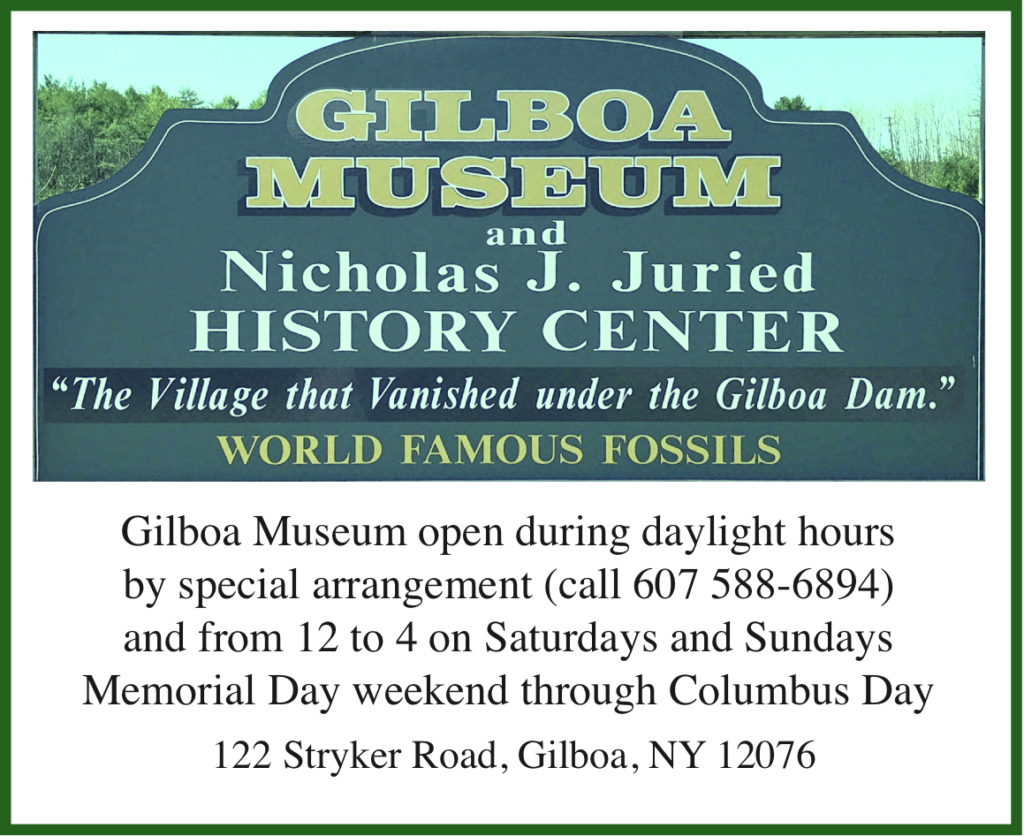
The Schoharie Reservoir
Shandakan Tunnel
Under Construction
The following content is text and captions drawn from an article of the fall 2011 GHS Quarterly, v. 13.3, and from an AV presentation. There are about 50 photos and captions that will be introduced as well.
Overview
Shandaken Tunnel gatehouse is located on west side of the reservoir and has been the center of water operations since 1924. The input chamber is the cellar of the gate house, and Schoharie water flows by gravity into it for the high point of its way to the city.
From there, it flows through the 18 mile Shandaken tunnel, gravity-fed through its 4° slope paralleling Route 23 to Lexington, then along Route 42 to the Esopus Creek at Allaben. Its route is marked by the silver “candy canes,” the original access points used for construction and still used for maintenance and air-pressure stabilization.
At Allaben, the water is fed into the Esopus Creek, and the total volume flows down to the Ashoken Reservoir for
The water is gravity fed Shandaken Tunnel gatehouse located on west side of reservoir center of water operations since 1924 The lower picture is taken from the east side of creek creek is in the foreground. intake channel is under the building sluice-gates screen the water keeping flotsam out of the gatehouse, and the electric derrick and grapple and then remove debris from channel plumbing fixtures ordered in 1922 4 massive castings that act as splitters on the right is assembled hydraulic cylinders and valves to open and close flow hydraulically assembled pipes with hydraulic shut-off valves were laid in a sub-basement main gate-room shows the tops of hydraulic valves extending up from the basement removable floor slabs over the shaft 10-ton electric crane in the ceiling Shandaken tunnel The tunnel as a whole has 8 access points: the intake house, and at 7 vertical shafts along its path. Work was simultaneously being done at these 7 shafts while the gatehouse was being constructed. access roads to the shafts were started in 1918 most support buildings had been completed by 1919 workers (“sandhogs”) drilled vertical shafts for a total of 3/5 of a mile by the end of 1920, shafts 1, 5, 6, and 7 had been completed; other shafts were completed in 1921 Each shaft served as an elevator to transport sandhogs, deliver tools, and remove dirt a conduit for pipes that would supply air to the base of the shaft to be distributed to the two work areas and pipes to carry water, hydraulic, and pneumatic hoses as well as electric circuits all tools were hydraulic, pneumatic, or electric and NO INTERNAL COMBUSTION Shandaken shaft heads tall structure is the head frame above the shaft that raised and lowered an elevator for the work area below hoist-house at shaft 1 with its 112-horsepower motor turning a 4.5 feet diameter drum by cables to raise/lower the elevator DESCRIPTION OF SHAFT BASE standard equipment at base of each shaft: four locomotives, two spare battery boxes, and miscellaneous carts a locomotive pulled six 1-cubic yard carts with dirt, rock, timber, etc between the work site and the shaft cars with waste were hauled up to the surface, emptied, refilled with supplies, sent back down two electric locomotives were at the top of each shaft and were continually charged when not in use four shifts of sandhogs worked 24 hours per day. 1921 typical cross section 11’6″ tall x 10’3″ wide almost a mile of tunnel per month utility conduits in the tunnel temporary support above pipe at right carries water to drills 6-inch 4-inch pipes to furnish air to the work area and pneumatic tools wires carry electric for lights and motors. Narrow gauge trains were essential, but sandhogs quickly learned that they also got in the way. Crews developed a routine where tracks were laid on one side of the tunnel and work would proceed on the other. Then, the tracks would be pulled up and laid on the other side so the sandhogs could work on the first side. An estimated 60 miles of track was laid within the 18 mile length of the tunnel. tunnels required large timber supports timbering gangs of four to six men 2, 3, or 4 ribs per 8-hour shift note how roof gets raised at each pass finished cement sidewalls concrete on sidewalls hauled from shaft to the forms in six-car trains concrete shoveled/spaded by hand ceiling concrete put on with pneumatic gun cement for “ceiling” into hopper dropped into the gun forced through hose to top of arch unit runs on tracks to move forward as needed. grouting machine used to seal tunnel reinforced concrete at outlet’s water seal. 1923—intake chamber closed in January 1924—first tests of tunnel Stamford Mirror Recorder, January 9, 1924 Shandaken Bore Officially Inspected Monday by Commissioners and Engineers Preliminary to Placing Tunnel in Operation—Party in Two Ford Cars Travel Underground from Allaben to Shaft 5 in West Kill At shaft 5, the two cars had to be turned around and returned to Allaben. February 1924 tunnel officially opened
- Edit Image

Please see our Facebook page or GilboaFossils.org for our current schedule.
Map for the Gilboa Museum.
GHS Facebook page
GilboaMuseum
Gilboa Museum Gift Shop
GHS Founders, Early Supporters
GHS Activities
GHS Facilities
GHS — Who We Are
Publications and Podcasts
Gilboa Fossils, a site of the Gilboa Historical Society.